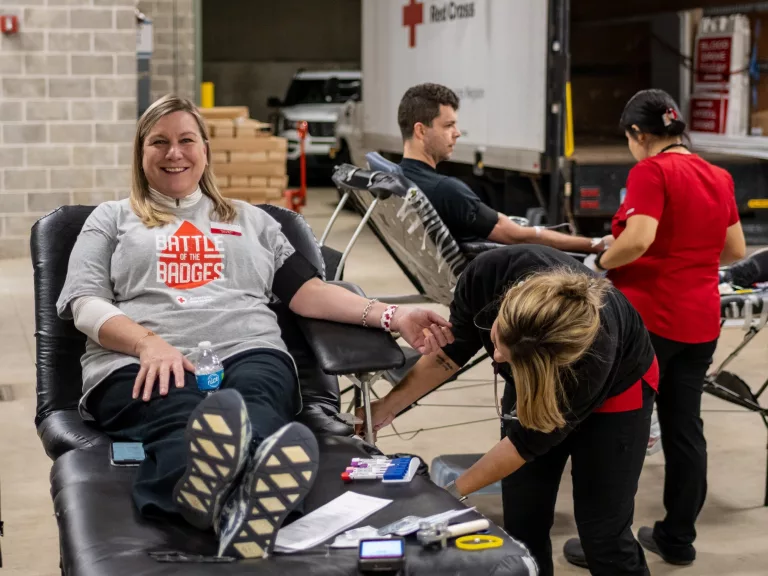
By Emma Barhydt
What is Novel Coronavirus, or COVID-19?
What is COVID-19? COVID-19, or novel coronavirus, is a virus displaying as a respiratory infection. Some claim “it’s just the flu.” Well, yes and no. Other strains of coronavirus already cause roughly 25 % of seasonal flu around the world; however, COVID-19 is a new (novel) strain of the virus, first introduced to the human population in December of 2019. So, in a way, it is another form of the flu as we understand it, but not one that human beings have been exposed to previously. COVID-19, like many other diseases, originated in animals (strongly believed, in this case, from bats) and mutated to allow spread and replication in humans. COVID-19 is much more severe than other forms of the flu, as it has a higher mortality rate and can spread more easily. In a podcast interview, Michael T. Osterholm – American public health scientist and a biosecurity and infectious disease expert – stated that COVID-19 could infect 20-60% of the population in the next 6 to 12 months. His estimate of time means that combating COVID-19 will be a marathon, not a sprint. Remember to be smart and think through what is necessary and possible to do to combat the spread of COVID-19.
Let’s Talk About Transmission
So, let’s talk about transmission. How does it transmit? COVID-19 spreads through “droplet spreading” which means that the virus travels on water droplets in the air from one person to another or lands on a surface. This means you can transmit, or shed, the virus by coughing, sneezing, talking in close proximity to another person. COVID-19 can land on the mouth of the nose of those you are talking to, or people can touch surfaces with the virus and then go to touch their nose, eyes, or mouth. Public bathrooms are also an area of concern, as without lids on toilets an infected person who uses the restroom would contaminate all surfaces within the bathroom. According to John Hopkins, COVID-19 “might be spread through the airborne route.” The CDC has stated that they are still learning how COVID-19 spreads but also cannot rule out airborne spread. While definitive evidence for airborne spread has not yet come to light, the CDC is urging people to take precautions against airborne spread as well as droplet spread regardless. Airborne spread means that direct contact is not needed to spread the virus. Residue containing the virus may remain suspended on dust in the air for long periods of time and can travel further distances than droplet spread. There are several ways for people to contract COVID-19. COVID-19 can enter the body through any mucous membrane, but primarily eyes, nose, and mouth. The most common way infections occur is through standing near an infected person when they cough or sneeze, or by touching a surface where the virus has landed and then touching your face.
What are the Symptoms?
After you are exposed to someone with the virus, incubation takes (on average) 6 days; however, it can be anywhere from 2 to 14 days before you present symptoms. Regardless of any symptoms, a person can become contagious within 24 hours of being exposed to the virus and may continue to be infectious until 3 days after a fever has subsided (provided the infected person has cleansed their person and clothes thoroughly). According to a peer reviewed article from the Journal of General Internal Medicine of 41 patients, the most common symptoms are runny nose, fever (98%), coughing (76%), trouble breathing (55%), sore muscles and fatigue (44%), and sneezing (28%). Less than 10% of the cases studied showed headache (8%), coughing blood (5%), and diarrhea (3%). More severe cases presented symptoms such as acute respiratory distress syndrome (29%), acute cardiac injury (12%), acute kidney injury (7%), and 7% went into shock.
What to do when you are ill with mild symptoms?
If you believe that you have COVID-19 and are not critically ill, the best course of action is to stay home and call your healthcare provider. The CDC recommends that those infected stay inside their houses, and away from family members and pets. The only exception for travel is to receive medical care. If possible, it is best to stay in a specific room in your house, use a separate bathroom from family members, and wear a face mask if you must leave if you are already infected. Stay self-quarantined in your house until you are instructed to leave by a healthcare provider. If you believe you have the virus and are not at serious risk of further illness, stay inside, drink plenty of fluids, and make every effort to not spread the virus.
How do you know it’s time to go to a hospital?
Seek further medical care if your illness is worsening. The CDC and Greenwich Hospital both recommend that if you develop difficulty breathing, harsh fever, or extremely persistent cough, you should contact your healthcare provider immediately. If you and your doctor have determined that you must go to a hospital, inform the facility prior to your arrival, wear a face mask and make every effort not to spread the virus while in transit.





